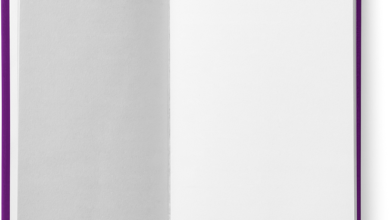
Finding Balance: Utilising a Calendar to Manage Work-Life Harmony
In today’s fast-paced and demanding world, striking a balance between work and personal life can often seem like an unattainable goal. Many individuals find themselves overwhelmed with their professional responsibilities, struggling to make time for personal pursuits, hobbies, and relationships. However, by incorporating effective calendar management techniques into our daily lives, we can find a harmonious balance between our work and personal commitments. In this article, we will explore how utilising a calendar can be a powerful tool in managing work-life harmony.
A calendar serves as an essential organisational tool, helping us allocate time to various tasks and activities. By implementing this tool strategically, we can enhance our productivity, decrease stress levels, and ensure that we have time for both work and personal matters.
One of the key benefits of using a calendar is its ability to foster effective time management. It allows us to visualise our day, week, or month ahead, providing a clear overview of all our commitments. By inputting our work-related tasks, meetings, and deadlines into the calendar, we ensure that important work obligations are accounted for and duly prioritised.
Furthermore, using a calendar helps prevent over-commitment. It allows us to evaluate our availability and ensure we don’t overextend ourselves by taking on more responsibilities than we can handle. By carefully scheduling our work-related engagements and assignments, we can make better-informed decisions regarding what we can realistically take on without sacrificing personal time.
Beyond work-related engagements, a calendar is also a valuable ally in managing personal responsibilities and interests. By allocating time slots for exercise, social interactions, hobbies, and relaxation, we can establish a healthier work-life balance. With a well-organised calendar, we can create intentional breaks within our work schedule, ensuring that we devote time to self-care and personal passions that often fall by the wayside in our hectic lives.
An essential aspect of calendar management is setting priorities. By categorising and colour-coding our tasks and events, we can visually distinguish between work-related and personal commitments. This allows us to be more focused, ensuring that we allocate appropriate attention to each aspect of our lives. Moreover, prioritising helps us identify potential conflicts or overlaps, giving us the opportunity to adjust our schedule accordingly to maintain balance.
To further optimise the benefits of using a calendar to manage work-life harmony, we must emphasise the importance of setting boundaries. By clearly defining our working hours, scheduling breaks, and honouring our personal commitments, we can prevent work from encroaching on our personal time. This ensures that we can be fully present and engaged in both professional and personal contexts.
In addition to traditional paper calendars, technology has provided a range of digital calendar tools that offer additional benefits and features. These digital calendars often sync across devices, allowing us to access our schedules from anywhere, at any time. This flexibility enhances our ability to manage our commitments, even when unforeseen circumstances arise or when we are on the go.
Furthermore, digital calendars often enable the integration of additional tools and features. For instance, they can sync with task management applications, allowing us to seamlessly connect our to-do lists with our calendar events. This integration ensures that our tasks are aligned with our schedule, enabling a more holistic approach to productivity and work-life harmony.
While a calendar can undoubtedly be a powerful ally in achieving work-life harmony, it’s essential to recognise that it should not become a source of stress itself. The purpose of implementing a calendar is to support time management and balance, not to create additional pressure or become a source of guilt when things don’t go according to plan. It is crucial to maintain a flexible mindset and adapt our schedules as needed, recognising that unexpected circumstances and changes are an inherent part of life.
In conclusion, striking a balance between work and personal life is an ongoing challenge in our modern society. However, by harnessing the power of calendar management, we can optimise our time, reduce stress, and achieve work-life harmony. Whether using traditional paper calendars or digital tools, the key lies in prioritisation, setting boundaries, and ensuring that we allocate time to both our work responsibilities and personal aspirations. With an effective calendar strategy in place, we can create a fulfilling and balanced life that encompasses our professional success and personal satisfaction.





